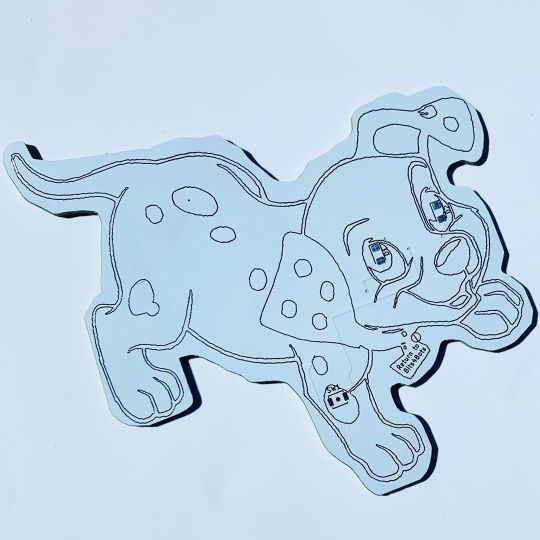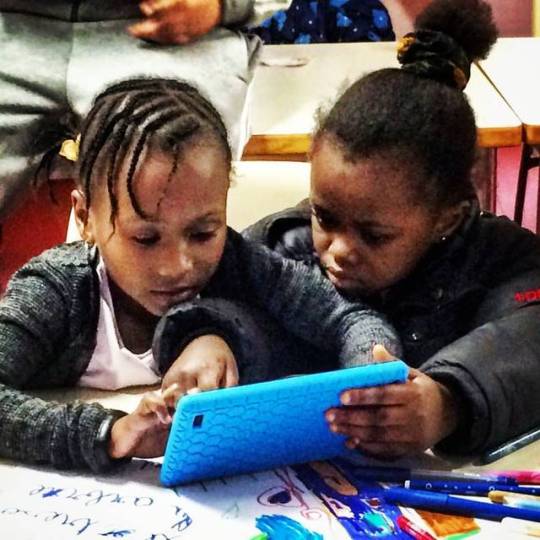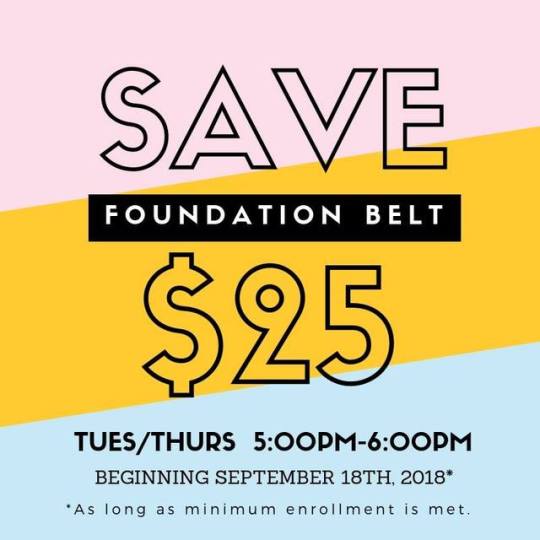#CodeForKids
Explore tagged Tumblr posts
Text
What is Future of Web Development For Kids

The future of web development for kids is bright and full of opportunities. As technology becomes increasingly integral to daily life, introducing children to coding and web development at an early age can set them up for success.
In the coming years, we can expect even more innovative educational resources, including AI-driven tutors, interactive coding games, and virtual reality environments that immerse kids in the world of programming. Schools are also beginning to integrate coding into their curriculums, emphasizing the importance of digital literacy alongside traditional subjects.
Moreover, early exposure to web development fosters critical thinking, problem-solving skills, and creativity. By empowering children with these skills, we are preparing a generation of innovators who will shape the future of technology, creating websites, apps, and digital experiences that we can only imagine today.
#WebDevelopment#KidsCoding#FutureTech#DigitalEducation#CodeForKids#TechSkills#ProgrammingForKids#LearnToCode#STEMEducation
0 notes
Photo

Puppy 🐶 color page badge! Yep. Kids can keep art and add technology. 🎨 Paint your puppy and use the mini push button to light 💡 up the eyes. For unsoldered DIY kits: Includes mini push button, 2 smd blue led, 2032 coin cell battery holder and metal pin clip. #instatech #electronics #tindie #engineering #kids #summercamp #kidscode #codeforkids #arduino (at Bits4Bots LLC) https://www.instagram.com/p/B9hv-XYp8UV/?igshid=1qu71d2fup7c5
0 notes
Photo

Together stronger ! The kids were solving a tremendous problem in Pocket Code ! #SocialBusiness #Impactmigrant #Edtech #Codeforkids #PocketCode (at Bois de Boulogne)
0 notes
Photo

Save $25 off the registration fee for Foundation Belt! Starting September 18th*, Foundation Belt will be held Tuesday and Thursday from 5:00pm-6:00pm. #codeforkids #friscotx #friscomoms #frisco #texas #tx #tech#education #afterschool
(*As long as the minimum enrollment is met.)
0 notes
Link
-continuing a series on teaching coding in primary grades-
Once I saw the potential of coding and the ability to use the activity of coding to get students to spend more time with the content, I was hooked. Now I had to figure out how to create learning to code as a learning experience for my students.
To paraphrase William Carlos Williams, so much depends upon your classroom context. (if I didn’t occasionally throw in some bad English teacher jokes you would be disappointed, admit it) When designing a coding lesson, remember that a good coding lesson is going to be structured in much the same way as any other student centered lesson in your class. My lesson is going to begin with a brief period of direct instruction and goal setting. If I can do this through video with a puppet, I do. even though it is a false variety, I like to have the kids get their information from multiple sources and media, so if the puppet can lead the into activity. I let him. I try to get the kids working as quickly as possible and I want them working for at least 30 minutes. Some can go longer, but coding is demanding and requires frustration management skills.
The Coding Lesson - Created with Haiku Deck, presentation software that inspires In the next post we will talk about the power of having students program in pairs, we also ask How do we keep girls engaged in coding and excited about learning through code? What questions do you have about programming in primary? leave a comment and join the conversation, or tweet at me @SamPatue.
“Coding is storytelling.”
Krishna Vedati CEO of Tynker
0 notes
Text
Why Kids Learn Web Development?

In today's digital era, where technology permeates every aspect of our lives, the importance of teaching kids web development cannot be overstated. As the internet continues to evolve and shape the world, equipping children with the skills to navigate and create within this digital landscape is crucial.
But why exactly do kids learn web development?
Empowerment Through Creation: Web development provides kids with a platform to unleash their creativity and bring their ideas to life. By learning how to code, they gain the ability to create websites and web applications from scratch, empowering them to express themselves in a unique and impactful way.
Preparing for the Future: In a world increasingly driven by technology, proficiency in web development opens up a myriad of opportunities for kids in the future job market. Whether they aspire to become web developers, designers, or entrepreneurs, or pursue careers in other fields, the skills they acquire through learning web development will undoubtedly be valuable.
Problem-Solving and Critical Thinking Skills: Web development teaches kids how to think logically and analytically as they tackle coding challenges and debug their programs. Through trial and error, they learn the importance of perseverance and develop problem-solving skills that are applicable far beyond the realm of coding.
Digital Literacy and Citizenship: Understanding how the internet works and being able to navigate it safely is an essential aspect of digital literacy. By learning web development, kids gain a deeper understanding of the digital world around them, including concepts like online privacy, cybersecurity, and responsible internet use.
Collaboration and Communication: Web development often involves working in teams, and collaborating with others to build projects and solve problems. Kids learn how to communicate effectively, share ideas, and work together towards a common goal, skills that are essential not only in coding but in all aspects of life.
#KidsWhoCode#EmpoweringYoungMinds#DigitalCreators#FutureTechLeaders#CodeForKids#STEMeducation#WebDevForKids#CodingGeneration#DigitalFutureBuilders
0 notes
Text
The Future of Web Development for Kids

The future of web development for kids is promising, offering a gateway to digital literacy and creativity. As technology continues to advance, web development skills become increasingly crucial. Learning to code and create websites empowers children to navigate the digital landscape with confidence. Kid-friendly coding platforms and tools make the learning process enjoyable, engaging, and accessible, fostering a love for problem-solving and design. With the rise of interactive and immersive online experiences, understanding web development provides kids with the ability to shape and contribute to the evolving internet. As the demand for digital content and applications grows, proficiency in web development opens doors to various career paths. Additionally, it nurtures essential skills such as critical thinking, collaboration, and adaptability, preparing kids for a future where technology plays a central role in nearly every aspect of life. In essence, the future of web development for kids not only aligns with technological advancements but also cultivates a generation of tech-savvy and innovative individuals.
#FutureDevelopers#CodeForKids#WebDevForChildren#DigitalLiteracy#CodingFun#YoungDevelopers#WebDevelopmentSkills
0 notes
Link
Like many teachers, I found The Hour of Code, sponsored by Code.org to be truly inspirational, I was already doing programming with most of my k-5 students, but it was stand alone, programming for the sake of programming. (Which IS worth it's own time, seriously. ) But I am always looking for those opprotunities to create another way to master a skill or demonsrate understanding.
This past week in #PATUE we were chatting about how tech can impact scope and sequence, which is a tricky topic. You will hear my voice as loud as any in the outcry against tech for the tech of tech (programming is different, it is a skill), or allowing tech choices to dictate instructional choices. But at the same time I believe as new tools become available to me as a teacher it is my job to use those tools to the best of my ability to meet the needs of all of my students. My end goal is all students learning as much as possible in a way where they experience empowerment and ownership of their knowledge. This means that I am always making choices about how to structure a lesson to meet the needs of all of my students.
Differentiation is an expectation at my school. We suport this expectation by enrolling teachers in differentiation trainings and in house support for the learning services team. While designing tech lessons I strive to model tech-based differentiation, often in the form of a video or screencast tutorial to support students who need the instructions repeated. It is too easy to ignore the other 1/2 of the spectrum. Differentiation needs to always reach in 2 directions, scaffolding to support those students that need it while clearing obstacles on the path ahead.
The Octogon Code
When I started working with Hopscotch I was using it with my 4th and 5th grade students, and they enjoyed the interface, but had already worked with scratch. Their reaction was a little like "What else you got?" My Hopscotch world changed radically when I caught Wes Fryer's session on Classroom 2.0. I loved hearing his learn-as-you-go approach to some pretty impressive tools, Minecraft, and Hopscotch. At the end of the webinair he shared his Hopscotch book with the audience. Wes had some great lessons and helped me find some of the great features of the program. I felt a bit silly when I realized there was a library of Hopscotch programs that I could access to see some great models. This really opened the possibilites for the app in my imagination.
Here is where the tech impacted the curriculum. In second grade the students learn about shapes, solids, and polygons, but they don't study angle measure. Students learn to use protractors in 3rd grade and I assume that is when they start drawing geometric models. I ran the idea of using Hopscotch to draw polygons by the 2nd grade teachers. I described how we would give the students the needed angle measures, after we talked about the number of degrees in a circle. The teachers were on board.
Each class figured it out by the second try. The discussion was a really great think-aloud session. After we completed the octogon, I left the code displayed and the teachers paired the students up on an iPad. I let them work on the floor so they could be close to the board. I asked the students to recreate the ocogon, and only a couple used the "set rotation to" command instead of the rotate command. Once they all successfully drew the ocotogon (about 4 minutes), I listed the # of sides and the angle measure in a chart on the white board, and showed the students where to plug in the values to create the other polygons.We opened class by talking about shapes and setting up the code on Hopscotch to draw a square (the students were "in the puddle" on the floor in front of the projection board. I was using my ipad projected via Apple TV using a NONHD projector. I could read Wes's book, but the students could not when I projected it, so I created his models in Hopscotch, easy fix). When we got to the turn, we talked about what "Rotate" means and what degreees were. I found myself standing at the clock before love and tracing the position as we crowdsourced how many degrees in one circle. This did not take long at all. The teachers were surprised by what the kids knew, I was grateful :). Once we had the degree defined we found that bear needed to turn 90, and 4 times made a square. Then we cut the angle measure in half and tried to figure out how many times we would need to repeat to close the polygon.
The Circle Code
Some students created stars, suns, giant triangles, a series of overlapping hexagon. I even have unverified reports of a cube! This lesson was about 50 minutes and the initial discussion was about 10 minutes and we engaged as much of the vocabulry as possible. The guided practice of drawing the polygons was about 25 minutes. This left a good span of time for students to go beyond the lesson.
Pairing the 2nd graders 2:1 in this lesson was great. They needed some reminders to share and take turns, but there were no breakdowns. As students worked there was some foot traffic between pairs as they asked each other questions and shared their discoveries. Once one group found the Text as sprite feature the idea spread quickly.
Posted with Blogsy
0 notes